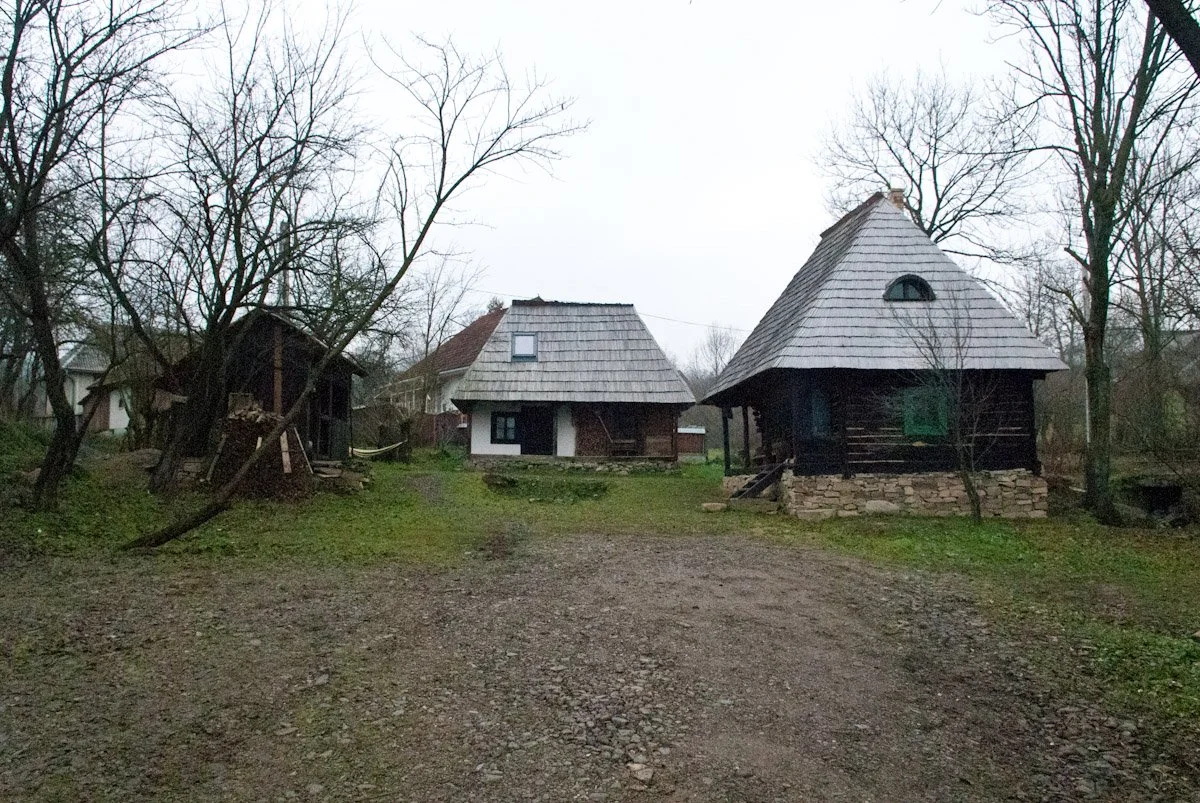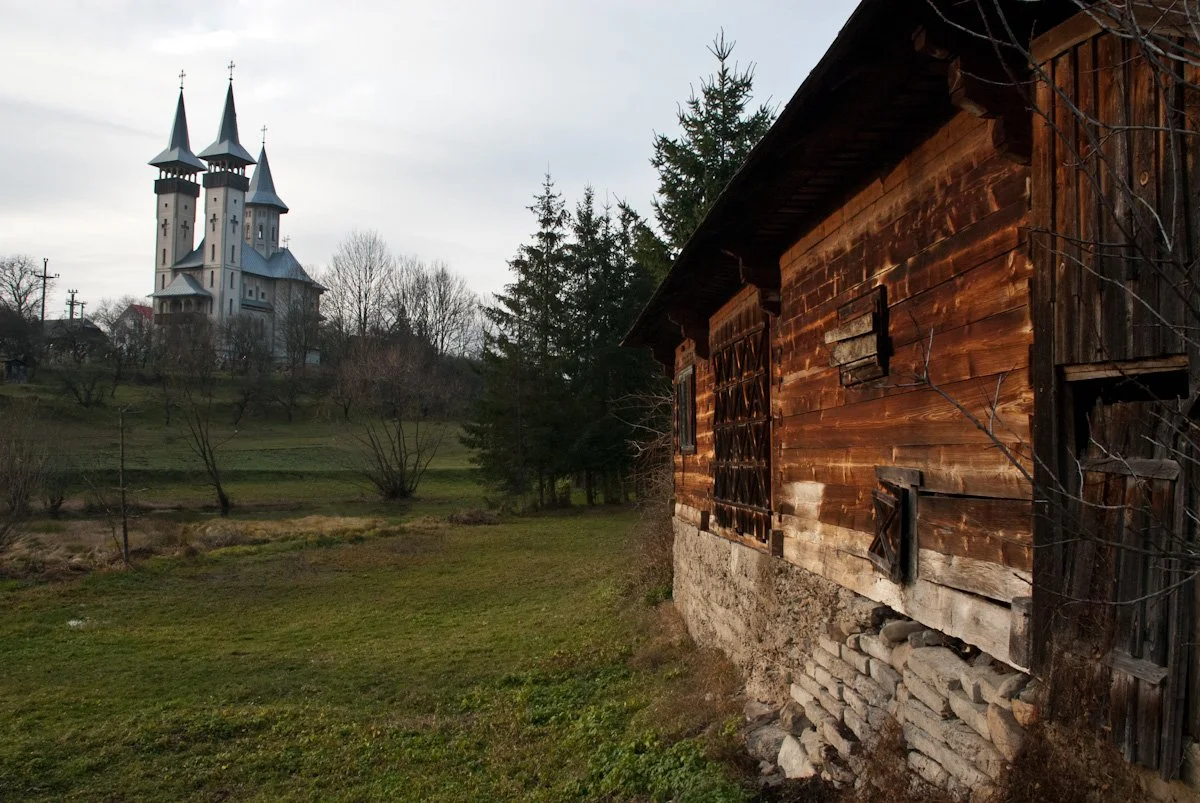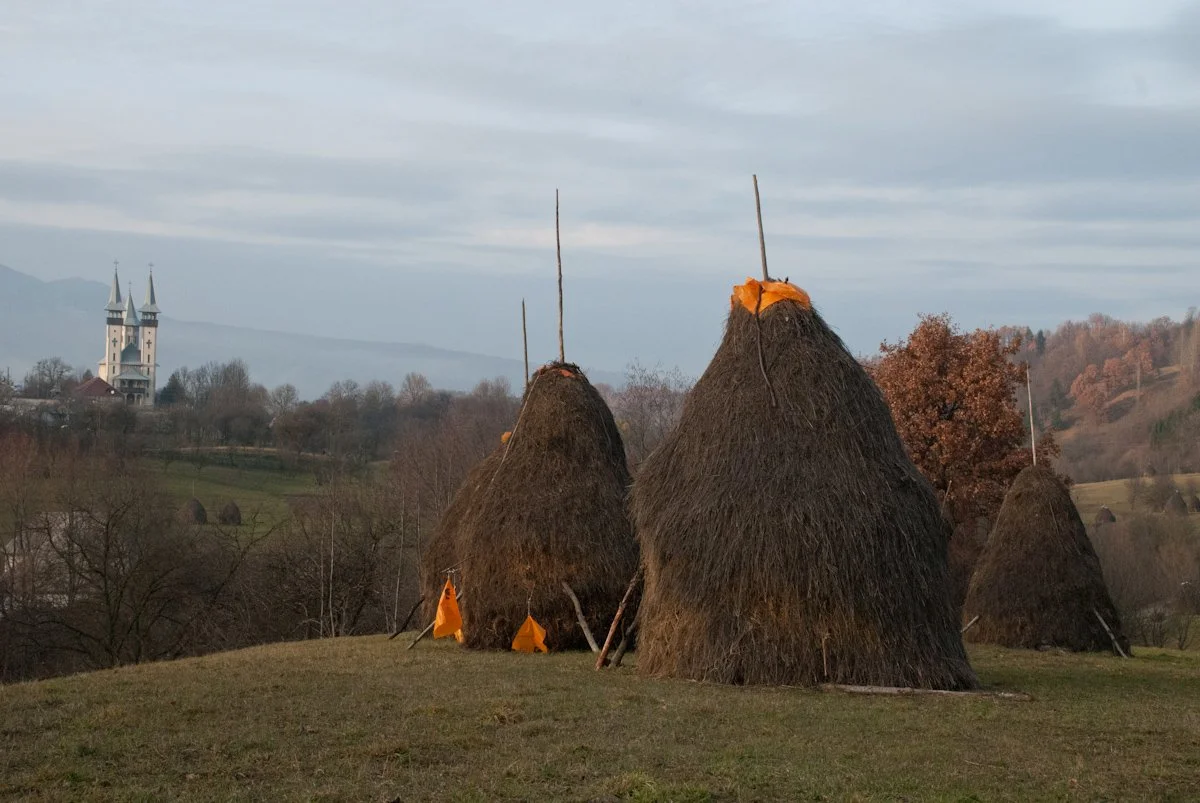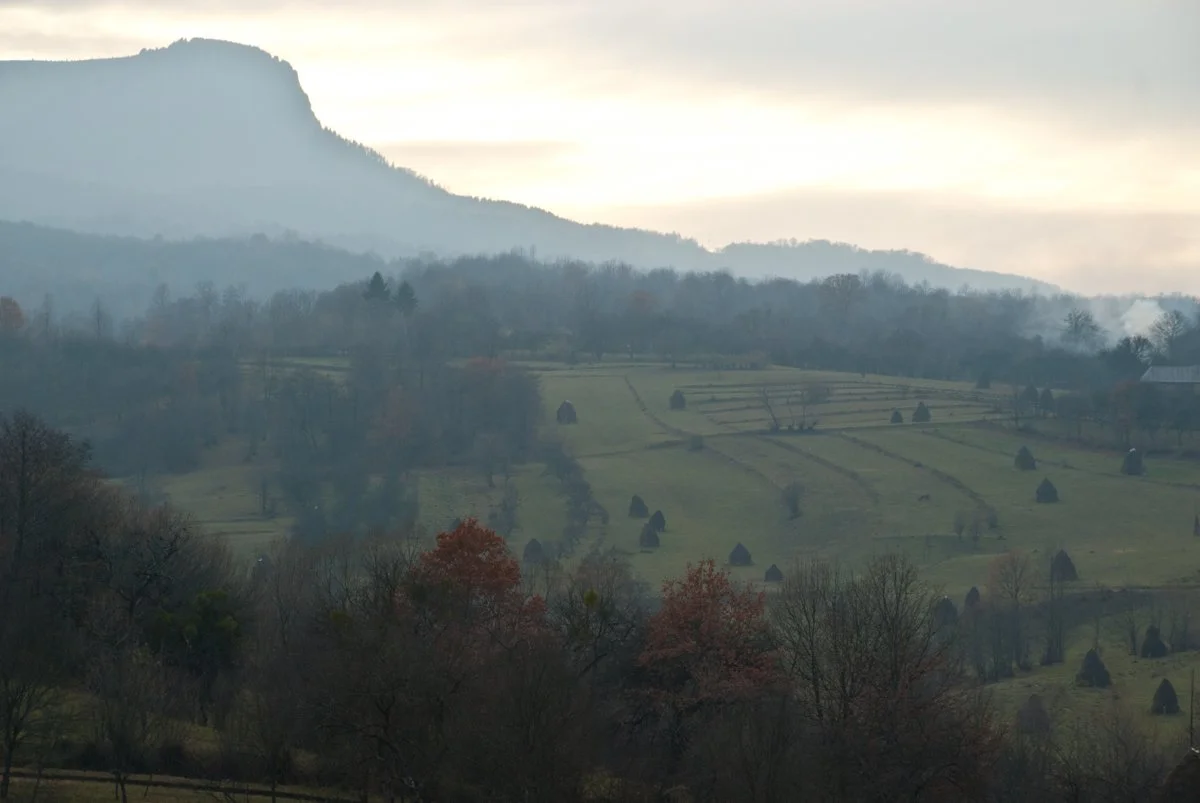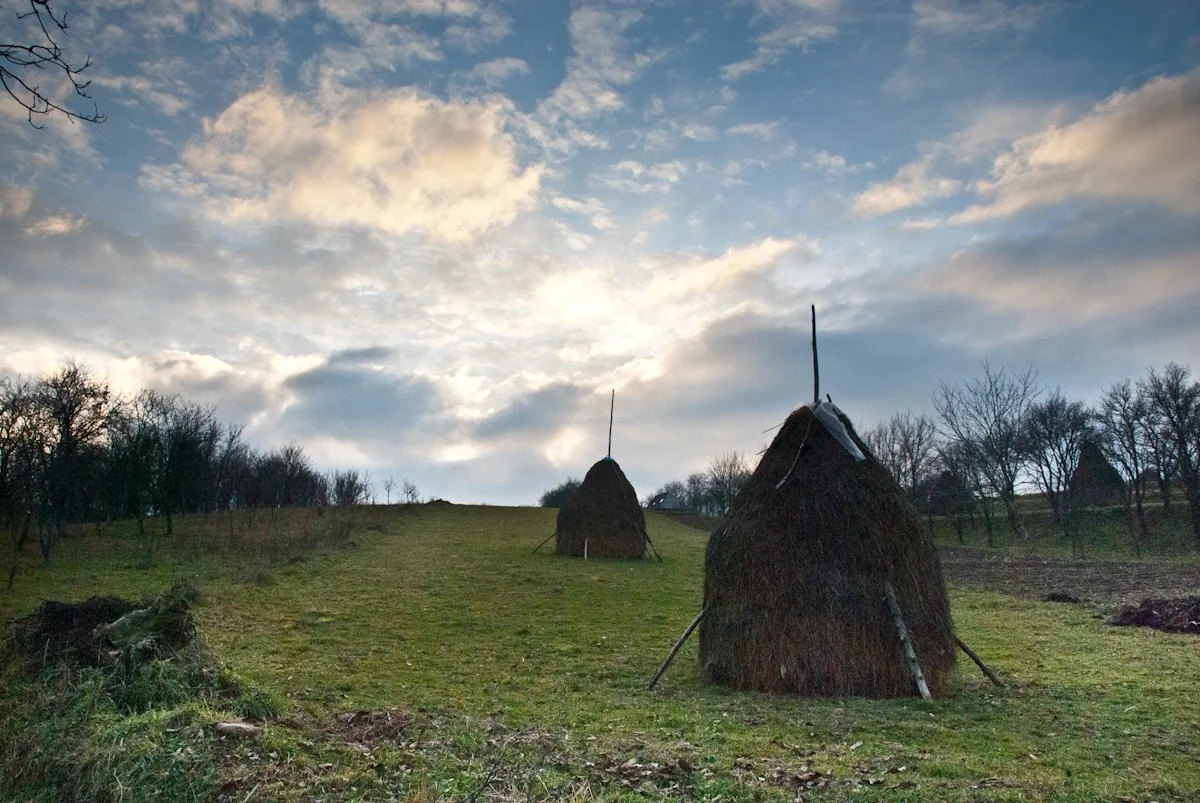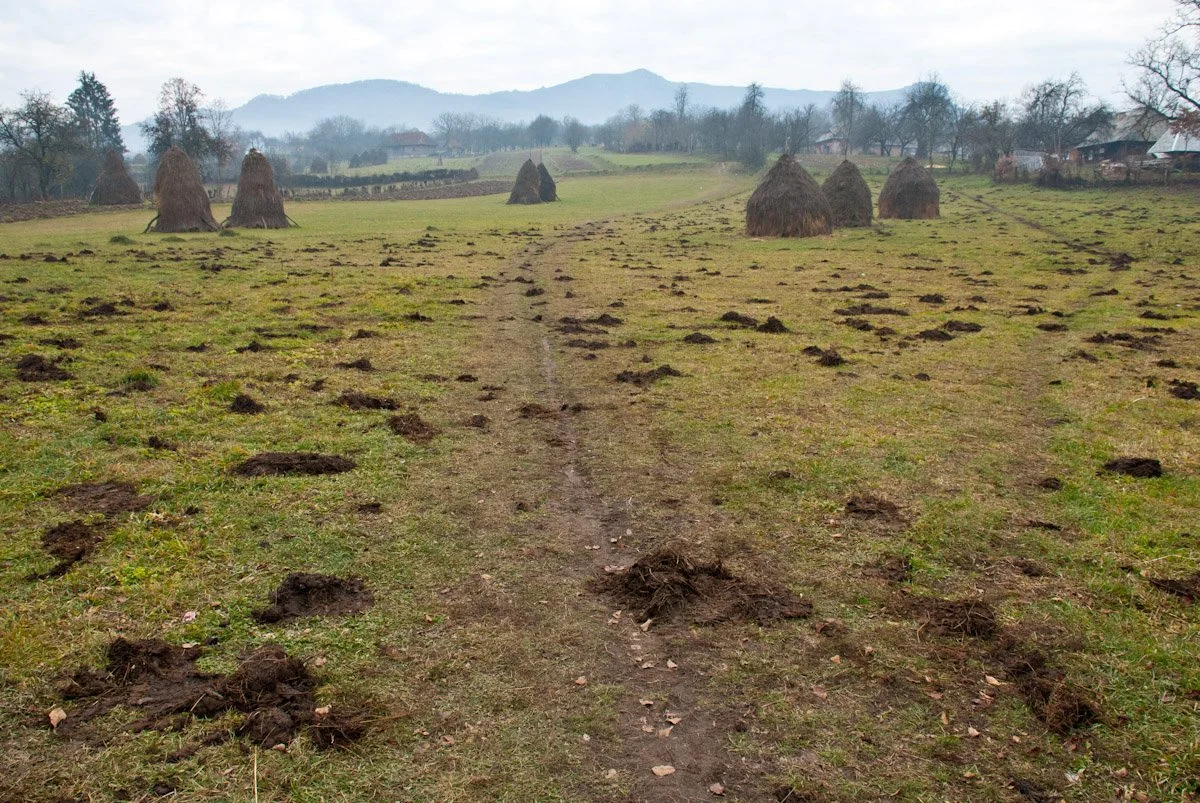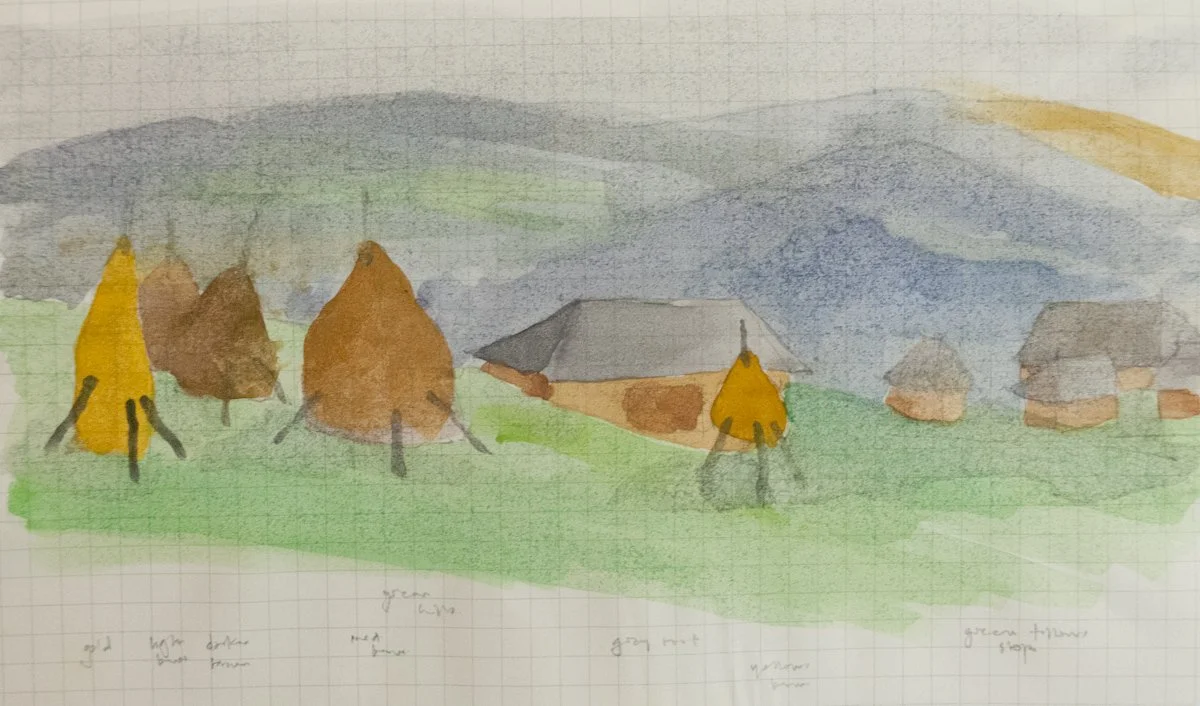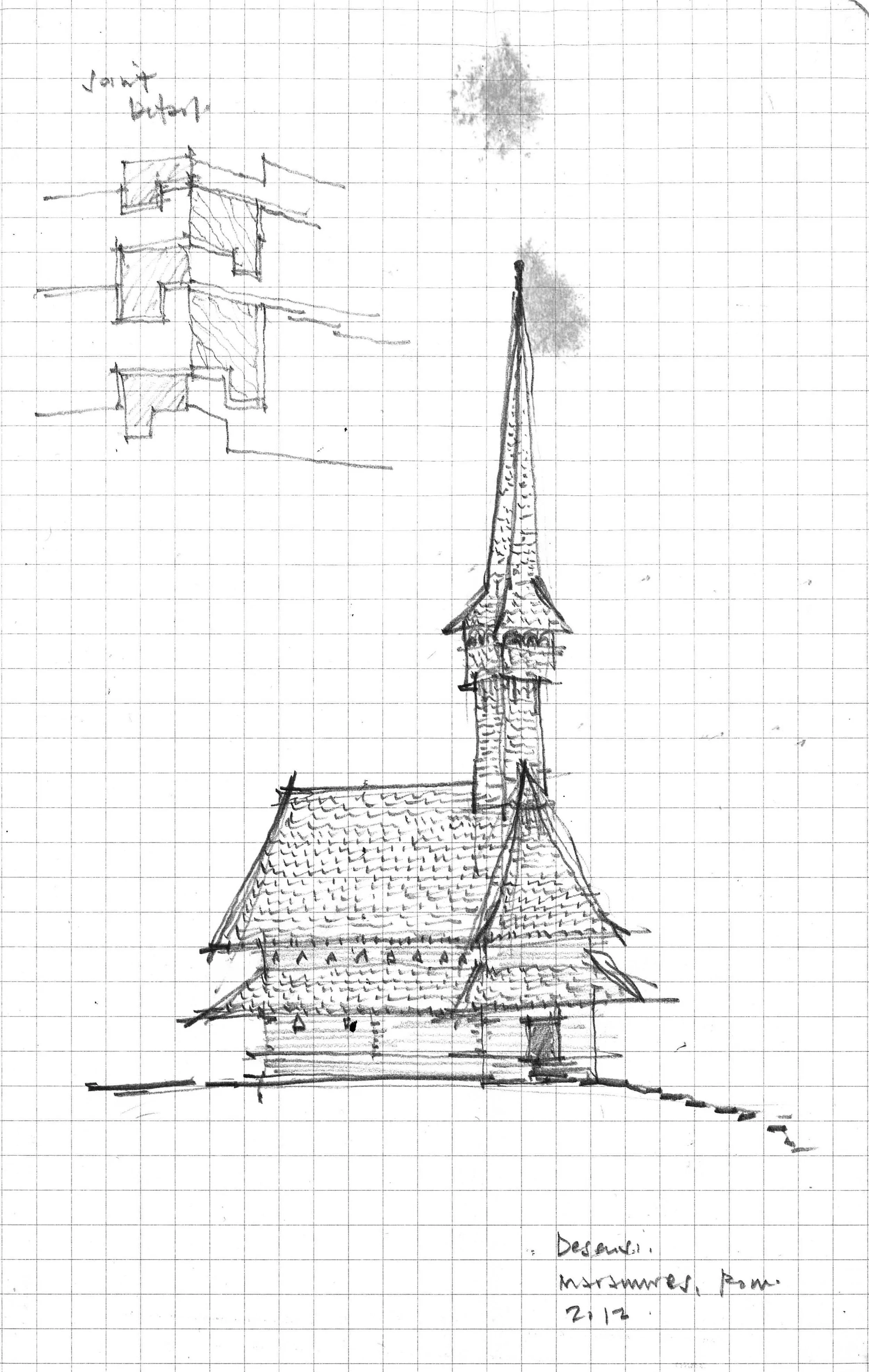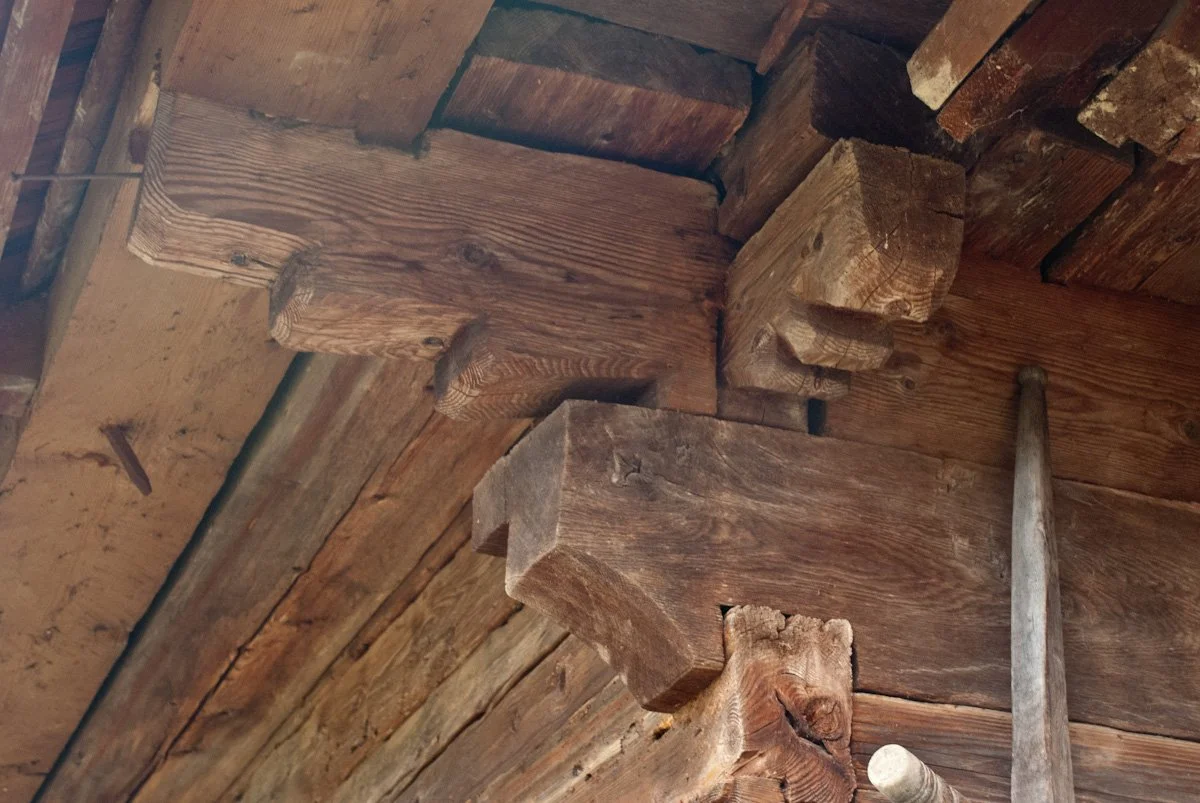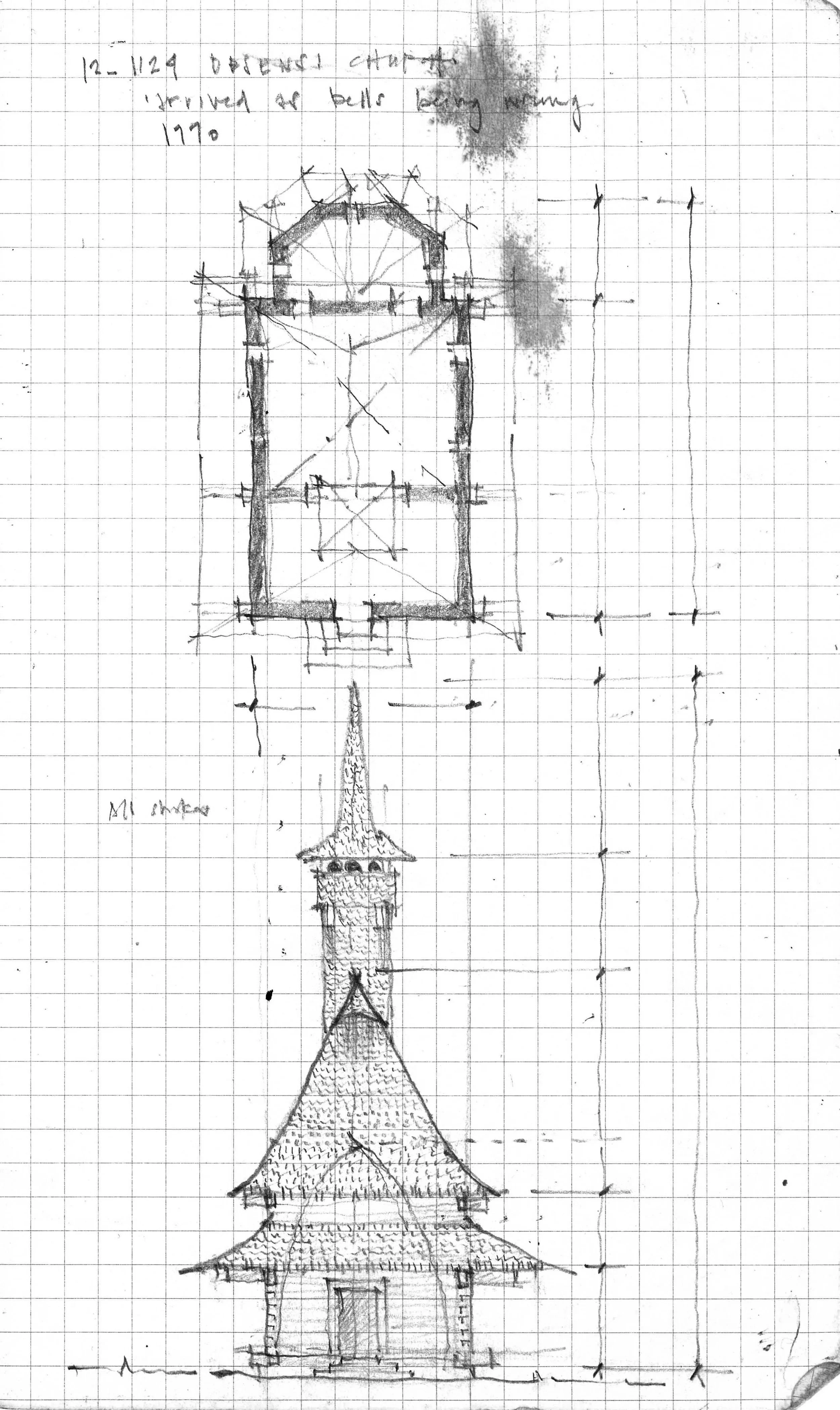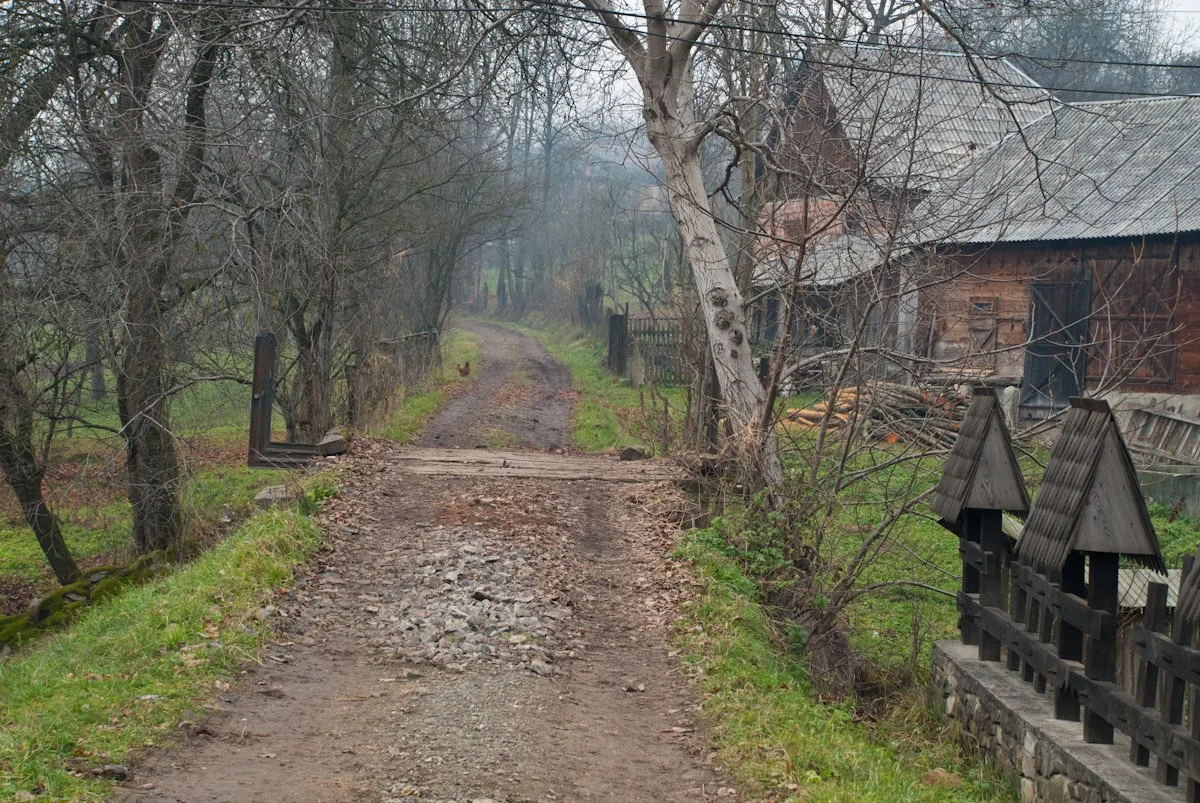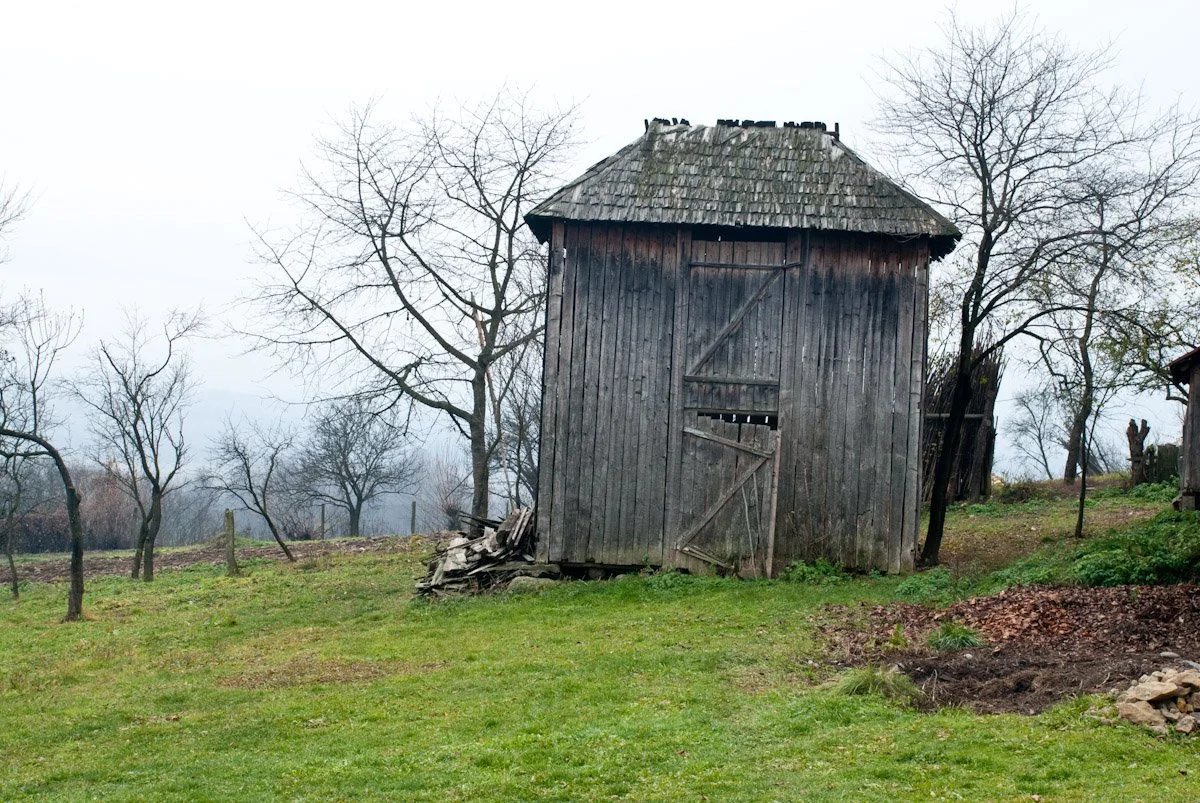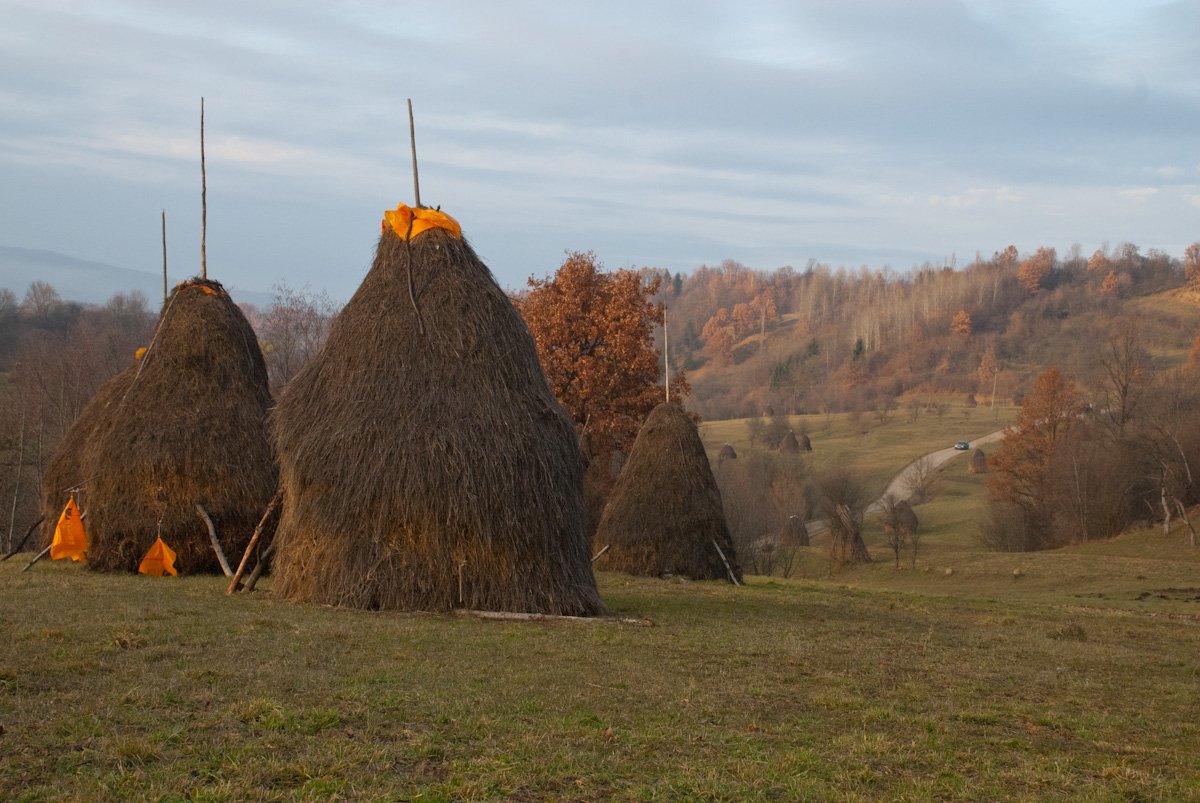
romania: maramures
28 november. 2012
Maramures is a secluded region of northern Romania, cut off from the rest of Romania to the south by a steep mountain range, and to the north by the Ukranian border. To get there from Baia Mare, I boarded a small fifteen person bus that wound its way up the mountain, and back down again to the Mara River valley.
I was traveling back in time. The area is known for its preserved peasant culture, the majority of the population subsisting off the land they work and the animals they keep. The fields throughout Maramures are filled with bulbous haystacks, that seem to take on human personalities... they’re everywhere, a sort of representation of the place and the people.
Due to the remote location, this historical area of Maramures avoided the systematization that swept through Romania under Ceauceseu’s rule during the communist years. It is one of the few places (that I am aware of at least) that are missing the massive concrete communist buildings. Baia Mare, the political seat of Maramures, was not so fortunate. Designated as the smelting capital of the region, the city suffered the aging brought on by industry: grit, pollution and a loss of charm (the city, not the people!)... but Maramures looked the same as it did 100 years ago.
I got off the bus in Desesti, an active little town along the main road, known for a UNESCO listed wooden church dating back to the 1700’s. As I watched the bus pull away, I really thought I had gone back in time. There were a couple of guys chopping wood in their yards, chickens dotted the gravel streets, a farmer passed me leading his sheep out to the distant fields, and a horse-drawn carriage with a cart full of hay sailed by.
I walked up the hill towards the black spire that rose above the village. I arrived just before 12:00 as two of the villagers were there to ring the noon bells. They pointed me into the church and began ringing the bells at 11:50... seemed like a strange time. I thought they were doing it because a tourist wandered up, but they rang the bells for the next ten minutes to signify noon... lucky me. I got to see the ringing of the bells and the inside of the church. If I had been there before or after noon, I would have had to track down the resident keyholder to gain access.
The wooden churches of Maramures are something else. Many of them built in the 1600’s and 1700’s, they are still well preserved today, namely due to the thoughtful construction and understanding of working with wood. Amazing wooden detailing! The complex corner joints and interior wall intersections rival the Japanese wood joinery I’ve come to appreciate so much. Real craft. The walls of the interiors are covered with paintings and murals, and the floors covered with hand woven wool rugs.
From Desenti, I walked two and a half kilometers up the main road to the village of Harcesti. Here I hung a right and walked for another half an hour into the smaller village of Hoteni, making another right and heading up a hill, past beautiful carved wooden gates marking the entries to the houses.I passed another wooden church in Hoteni, crested the hill around 1:30, and sat down in a meadow and snacked from my jar of gherkins, ate a mandarin and finished with half a Kit Kat bar. That’s how lunch has been going lately...
The rutted asphalt turned to gravel, as I found myself along the ridge between Hoteni and Breb, my destination for the evening. I left the path and came over a little rise, seeing the village in the distance, the Orthodox church spires rising in the air, marking the town’s location. I came down the meadow, weaving through the giant haystacks and into the village. The roads were wet and muddy, making for some messy walking about.
The more touristed villages in Maramures lie along the river valley’s of the Mara and the Ize, where the road infrastructure makes it easy to get in and out. Breb avoided a lot of these crowds because it was not so easy to get to. The village was larger than I thought though, or at least a little confusing, as I wandered all over looking for my hostel accommodations at the Village Hotel. I finally found the center of the village and saw signs for the hostel. I walked up the gravel road, turned off and came to a drive with three houses at the end. I walked up and Maria opened the door to the XXXXXXX, or little house. There was a large comfy couch with sheep’s skins on it, and a fire burning warming the house. I asked her where I would be staying, understanding the Village Hotel had both residences and hostel accommodations. She informed that this was it. It was the low season, and i would have the house to myself... for twelve Euros a night? Are you kidding me? This was going to be a nice break...
MORE ABOUT THE WOODEN CHURCHES OF THE AREA. (MENTION MARIA) THE STORY ABOUT THE COMMUNISTS TAKING THE church, BUT THE RESIDENTS REFUSING TO GIVE UP THEIR CHURCH, SO THEY BURIED IT IN ORDER TO PRESERVE IT.
